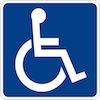Male and female orgasmic disorder (formally anorgasmia (primary or secondary)) is a sexual dysfunction where an individual struggles to achieve orgasm or has lost the ability to achieve orgasm during sexual play (whether with a partner or during solo masturbation). Many individuals with these symptoms experience anxiety around initiating sex with a partner, and may feel guilty or shameful for not being “normal.” While statistically more common in females, a lack of ability to achieve orgasm/orgasm loss can be due to a number of things.
For instance, antidepressants (SSRI variety) may impact ability to orgasm. Additionally, general anxiety around sexuality, beliefs around sexuality and normal sexual practice, or a lack of sexual knowledge can impact ability to orgasm for the first time.
A significant number of individuals (both male and female) experience; a general inability to achieve orgasm or haven’t in life (with or without a partner), situational issues with orgasm (with or without a partner), or acquired issues with orgasm (where you were able to achieve orgasm at one point, but no longer possess the capacity to do so).
Differing interventions and treatment programs exist for each orgasmic issue outlined in the paragraph above, from medical intervention to psychological treatment. Quelling anxiety, potentially changing medications, familiarizing oneself with one’s anatomy, understanding what is sexually and physically stimulating through body touch and masturbation, generally understanding your body better, relationship counseling, and mindfulness-based stress reduction can all be effective strategies for helping achieve a preferable orgasm alone and with a partner.
Sex therapy and related interventions have been shown to be effective in helping treat male and female orgasm issues.


